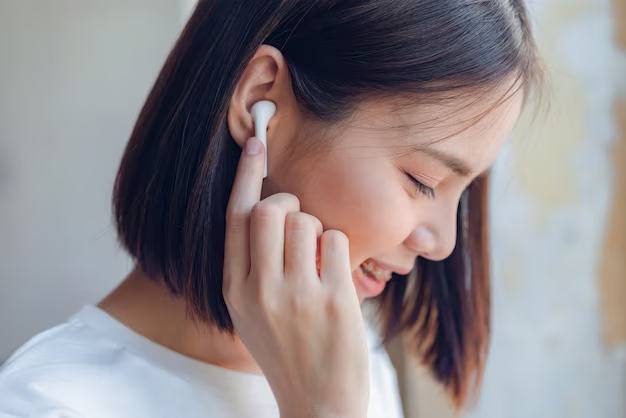Are Enacfire E60 Earbuds a Practical Solution for Hearing Assistance?
In today’s dynamic wireless market, earbuds like the Enacfire E60 have become incredibly popular, with their sleek design and impressive sound quality appealing to the tech-savvy and audiophiles alike. But an interesting question arises: Can these devices also serve as a form of makeshift hearing aids for those experiencing hearing difficulties? Let’s explore the scope, functions, and limitations of using Enacfire E60 earbuds as hearing aids.
Understanding Hearing Loss and Hearing Aids
What Is Hearing Loss?
Hearing loss can range from mild to profound and affects people differently depending on the cause and severity. Many factors can lead to hearing loss, including aging, exposure to loud noises, infections, or genetic predispositions. Understanding the nature of your hearing loss is crucial before considering any aids or devices.
Purpose of Hearing Aids
Hearing aids are medically prescribed devices specifically designed to amplify sounds for individuals with hearing difficulties. They are sophisticated, customizable, and tailored to accommodate various types and levels of hearing impairment, enhancing not just sound amplification but also speech clarity and directional sound perception.
Enacfire E60 Earbuds: An Overview
Features of Enacfire E60
The Enacfire E60 earbuds come with a host of features that make them popular among consumers. They boast high-quality sound, Bluetooth connectivity, water resistance, and comfort for extended wear. Their noise-canceling capabilities add an extra layer of sound control, making them ideal for music and calls.
Can Earbuds Function Like Hearing Aids?
While traditional hearing aids are specifically engineered to assist with hearing impairments, modern technology has introduced sound amplifying features into earbuds and headphones. These devices can sometimes help individuals with mild hearing difficulties by amplifying voices and sounds in personal or work environments. However, it’s important to understand that they are not replacements for professional hearing aids.
Using Enacfire E60 Earbuds as Hearing Aids: What to Consider
Exploring the Possibilities
Connectivity and Controls: The Enacfire E60 earbuds enable wireless connection to devices via Bluetooth, which can be used to stream audio from various sources. This feature may allow individuals to adjust volumes and settings through compatible apps, offering some level of sound personalization.
Sound Amplification: Although primarily designed for music and communication, the sound amplification feature of some earbuds can incidentally help those with slight hearing challenges. Ensuring that earbuds are calibrated for optimal hearing experiences involves careful management of device settings.
Understanding Limitations
Lack of Customization: Unlike professional hearing aids, the Enacfire E60 does not offer the level of customization necessary to cater to specific hearing loss patterns, such as targeting particular frequencies or noise suppression.
Safety Concerns: Prolonged exposure to high volumes via earbuds can further damage hearing, making it essential that users are conscious of safe listening levels.
Sound Quality and Clarity: Traditional hearing aids are calibrated to enhance speech clarity through directional microphones. Earbuds, being generic, lack this precision, which might diminish their effectiveness in conversations or crowded settings.
No Comprehensive Audiometric Evaluation: Hearing aids usually require a comprehensive audiometric evaluation conducted by a hearing professional, ensuring the appropriate hearing aid is prescribed. Earbuds do not offer this.
Practical Solutions and Tips for Best Use
For Those Considering Earbuds for Mild Issues
Volume Management: Exercise caution in controlling volume levels. Utilize apps or device features that track listening habits and provide alerts when approaching unsafe levels.
Environmental Awareness: Recognize the context where earbuds might help. Quiet, controlled environments are where they are most effective for mild amplification needs.
Balanced Use: Alternate between using earbuds and natural hearing to avoid reliance, ensuring the auditory system continues to adapt naturally.
Collaborating with Technology
Apps and Settings: Explore mobile applications that enhance sound control for Bluetooth devices. These might offer basic equalizer settings to tweak sound profiles.
Regular Hearing Checks: Maintain regular hearing assessments as any noticeable decline should be addressed promptly by audiologists.
Combining Devices: Consider solutions that involve using adjunct devices like microphone transmitters or specialized headphones designed for hearing assistance, which can provide a clearer sound input alongside earbuds.
Epilogue of Sound: Balancing Use and Necessity
While technology enables versatile uses of devices like the Enacfire E60 earbuds, their capabilities in acting as a full-fledged hearing aid remain limited. They serve well for casual sound amplification but fall short when it comes to comprehensive auditory support provided by certified hearing aids. For those requiring ongoing hearing assistance, consulting with a professional is paramount — ensuring a sound strategy for your auditory health.
Quick Consumer Tips 🎯
- 💡 Adjust Volume Safely: Keep sound levels within recommended limits to protect hearing over time.
- 🛠️ Explore Settings: Use app equalizers to customize sound as much as possible.
- 🔄 Alternate Usage: Balance earbud use with natural listening to foster healthier hearing habits.
- 📆 Check-Ups: Routine audiological check-ups are essential for monitoring hearing health.
By understanding the capabilities and limitations of the Enacfire E60 earbuds, consumers can navigate their options thoughtfully — enriching auditory experiences without compromising safety or expectations. With the right balance of technology and proactive care, users can enjoy both innovative sound solutions and maintain their hearing health.

Related Topics
- a Plus Hearing Aid Centers
- a Real Pain Showtimes Near Centerville
- Are Airpods Bad For Your Ears
- Are Apple Second Generation Airpods Hearing Aids
- Are Audien Hearing Aids Just Amplifiers
- Are Costco Hearing Aids As Good As Others
- Are Costco Hearing Aids Good
- Are Hearing Aid Domes Interchangeable
- Are Hearing Aid Subscriptions Worth It
- Are Hearing Aid Tax Deductible